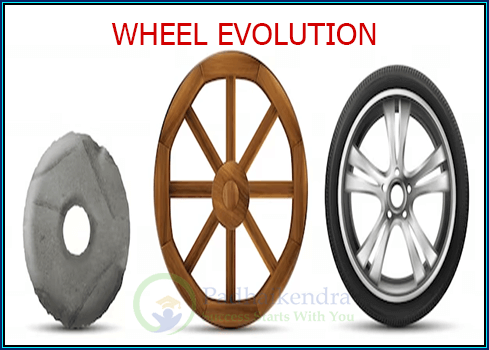The wheel is one of the most important inventions in human history, and its origins can be traced back to ancient times. The earliest known examples of wheeled vehicles were discovered in the archaeological record in Mesopotamia, in what is now modern-day Iraq, and date back to around 3500 BCE. These early wheels were made from solid wooden discs and were likely used for transporting goods and materials over short distances.
It is believed that the invention of the wheel was a gradual process that developed over time, rather than a single moment of discovery. The idea of using a circular object to aid in transportation may have come from observing rolling logs or other round objects in nature. Over time, humans began to experiment with different materials and designs, eventually developing the wheeled vehicle we are familiar with today.
The wheel revolutionized transportation and played a crucial role in the development of human civilization. It made it possible to transport heavy goods over long distances more efficiently and quickly than before, enabling trade and commerce to flourish. The wheel was also used in the development of many other important inventions, such as the pulley and the waterwheel, which had a significant impact on agriculture, industry, and technology. Today, the wheel is still one of the most important inventions in human history, and its influence can be seen in everything from cars and trains to bicycles and roller skates.
Wheel
We often think that humans first walked on two legs, left caves, discovered fire, and made the wheel. However, many important things were invented before the wheel, thousands of years ago. For example, people made needles for sewing, cloth by weaving, ropes, baskets, boats, and even musical flutes. These inventions were very important for people at that time and helped them in their daily lives. The wheel was invented later and also had a big impact on the way people lived.
No wheels exist in nature
Many inventions that humans have made were inspired by things found in nature. For example, people got the idea for pitchforks and table forks from sticks that had a forked shape. And the idea for airplanes came from watching how birds glide through the air. However, the invention of the wheel was different because there isn’t really anything like a wheel that exists in nature. So humans had to come up with the idea for the wheel all on their own! This makes the wheel a very special invention because it was created entirely by humans, without any help from nature.
When Was the Wheel Invented?
Before the wheel was invented, humans used to carry heavy things by hand or use animals like oxen, horses, donkeys and camels to help them. But one day, around 3500 BC, a clever person living in Mesopotamia (which is now Iraq) had an idea. They cut a circle out of a tree trunk and made a hole in the middle. This was the first version of the wheel! At first, people used it for making pottery, but soon they realized that they could use it to help them move heavy things too. This was a really important invention because it made it much easier for people to transport things and trade with each other. And it all started with someone having an idea and making a simple wheel out of a tree trunk!
Wheel and Axle
Just having a wheel by itself wouldn’t have been very useful. But when people figured out how to attach a bar (called an axle) to the middle of the wheel, they made a really important discovery. This allowed the wheel to spin around the axle, which made it possible to build carts and chariots that people could use to transport things.
When they built these carts and chariots, they had to make sure that the axle was really thin so that it didn’t slow down the wheel too much. The less friction there was between the wheel and the axle, the easier it was to move things around. So they had to make sure that the wheel’s inner surface and the axle’s outer surface were really smooth to reduce friction. This made it possible for people to move things much more easily and quickly than before. And it all started with someone figuring out how to attach an axle to a wheel!
The First Wheeled Vehicle
Long ago, around 5000 years ago, people in Mesopotamia (now called Iraq) started using wheels made out of wood to help them move heavy things around. Researchers also found old wheels made out of wood in Slovenia, which were used for chariots around 3200 BC. The Greeks and Romans also had stories about wheels, and they thought the wheel was a symbol of luck and fortune.
Around 4000 years ago, the Egyptians started using a new kind of wheel with spokes for their chariots. These spoked wheels made the chariots go much faster.
But it wasn’t until much later, in the 19th century, that a man named Robert William Thompson invented the rubber tyre. The tyre was filled with compressed air, and it made the ride smoother and more comfortable. From that time on, we’ve been using tyres made of rubber on all kinds of vehicles, from bicycles to cars to airplanes.
Wheels Continue to Progress
The wheel has come a long way since its invention. Over time, people have continued to improve and modify the wheel to meet new needs. For example, in the 19th century, Robert William Thompson invented the rubber wheel with compressed air called a tyre. This made wheels more comfortable to ride on and allowed them to grip the ground better, making travel safer. Since then, people have continued to make improvements to wheels, such as creating different types of tyres for different terrains, designing wheels for specific vehicles, and even developing wheels for use in space exploration. So, while the wheel may have started as a simple invention thousands of years ago, it has continued to evolve and progress over time to meet the changing needs of people.



